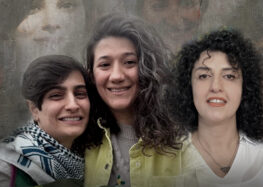Introduction
In 2014, a series of acid attacks on women in public places occurred in the Iranian city of Isfahan. The attacks involved unidentified men flinging acid into the faces of young women, who were usually sitting in cars. In a number of the attacks, eyewitnesses reported the assailants proclaimed they were confronting improper hijab (Islamic dress for woman) as they flung the acid.
Four attacks have been officially acknowledged, but early reports in local news sources, before the authorities discouraged media attention to the issue, indicated 14 attacks had occurred. Unconfirmed reports have asserted that additional attacks have taken place, with some putting the number as high as 18 to 20. The attacks, which were first reported by ISNA (the Islamic Student News Agency) on October 16, 2014 but actually began several weeks earlier, have resulted in at least one (reported) death, and egregious injuries to the rest of the women.
No one has been identified or charged in any of the attacks. There have, however, been several public protests regarding the attacks and the lack of concerted judicial attention to the crimes, and individuals participating in these peaceful protests have been arrested. A peaceful gathering in front of the Iranian Parliament on October 22, 2014, ended with the beating and arrest of several of the protesters by security agents. Among those arrested was the women’s rights activist Mahdieh Golroo, who was taken into custody on October 23, 2014, the day after she attended the Tehran gathering. She was held for three months, without public charge, until her release on bail on January 27, 2015. A peaceful gathering outside the Iranian Judiciary building in Isfahan, also on October 22, ended when plainclothes agents used batons and tear gas to disperse the crowd.
The day after the Isfahan protest, security agents arrested a photographer and two editors who had been covering the gathering for ISNA, which had been one of the major news outlets reporting on the attacks. While the two editors were released the next day, the photographer was held until October 31, when she was released on bail.
These attacks have not taken place in a vacuum. Nor are they a series of isolated incidents. Rather, as this Briefing Paper by the International Campaign for Human Rights in Iran shows, they have come in the midst of state legislation that has sought to mandate ultraconservative notions of women’s attire and behavior (with particular attention to strict adherence to “proper” hijab), public statements by state officials and leading government-affiliated clerics that have sought to portray defense of these policies as an Islamic duty, and the explicit designation of paramilitary organizations to enforce such policies. Indeed, one of the proposed pieces of legislation concerning women, the Plan to Promote Virtue and Prevent Vice, specifically designates the Basij (a volunteer paramilitary force under the supervision of the Islamic Revolutionary Guards which is used to enforce the regime’s ideological dictates) to enforce the Plan.
Women’s rights have been under assault in other ways as well, as a number of additional state initiatives that seek to curtail women’s participation in the public sphere are making their way through Parliament and other areas controlled by the state. These initiatives, which limit women’s employment and access to reproductive health and family planning, and promote gender-based university admissions, profoundly restrict women’s ability to function fully and equally in public life. All have been forcefully justified by their proponents on ideological grounds.
Taken together, this has created a climate of state-sanctioned ideological intolerance that has set the stage for violence, in which vigilante groups take matters into their own hands to defend such policies and address “violations.” As the human and women’s rights defender Narges Mohammadi asserted, “Plans such as the ‘Plan to Promote Virtue and Prevent Vice’ and the ‘Plan to Protect Chastity and Hijab’ have issues and vocabulary that may be abused in the Iranian society and turned into excuses for violence [against women].”
Despite the series of assaults, the authorities have focused on silencing media coverage of the attacks, rather than identifying and prosecuting the perpetrators. The arrests of journalists reporting on the attacks have had a chilling effect on news coverage of the issue, effectively ending independent news reporting and limiting information on the attacks to official utterances.
The lack of judicial attention to violent assaults against women sends a message that such crimes are not real crimes at all, but rather defensible, even if misguided, actions taken by individuals in the name of Islam. It suggests that the intimidation of women and the imposition of hardline ideological proclivities are the real priorities, and ones that takes precedence over law enforcement and justice. This is a position that calls into serious question the Islamic Republic’s claim that it is a country governed by the rule of law.
Unless state officials make it clear that any citizen who takes it upon himself to enforce female dress codes is acting illegally and will be punished to the full extent of the law, the likelihood of more attacks is a clear and present danger. Moreover, any legislation that calls for the extra-judicial enforcement of “virtue” puts every woman in Iran at continued risk of violent assaults, and as such should be immediately withdrawn. Such legislation is not only an violation of Iranian and international law, it is a direct threat to the lives of Iranian women.




